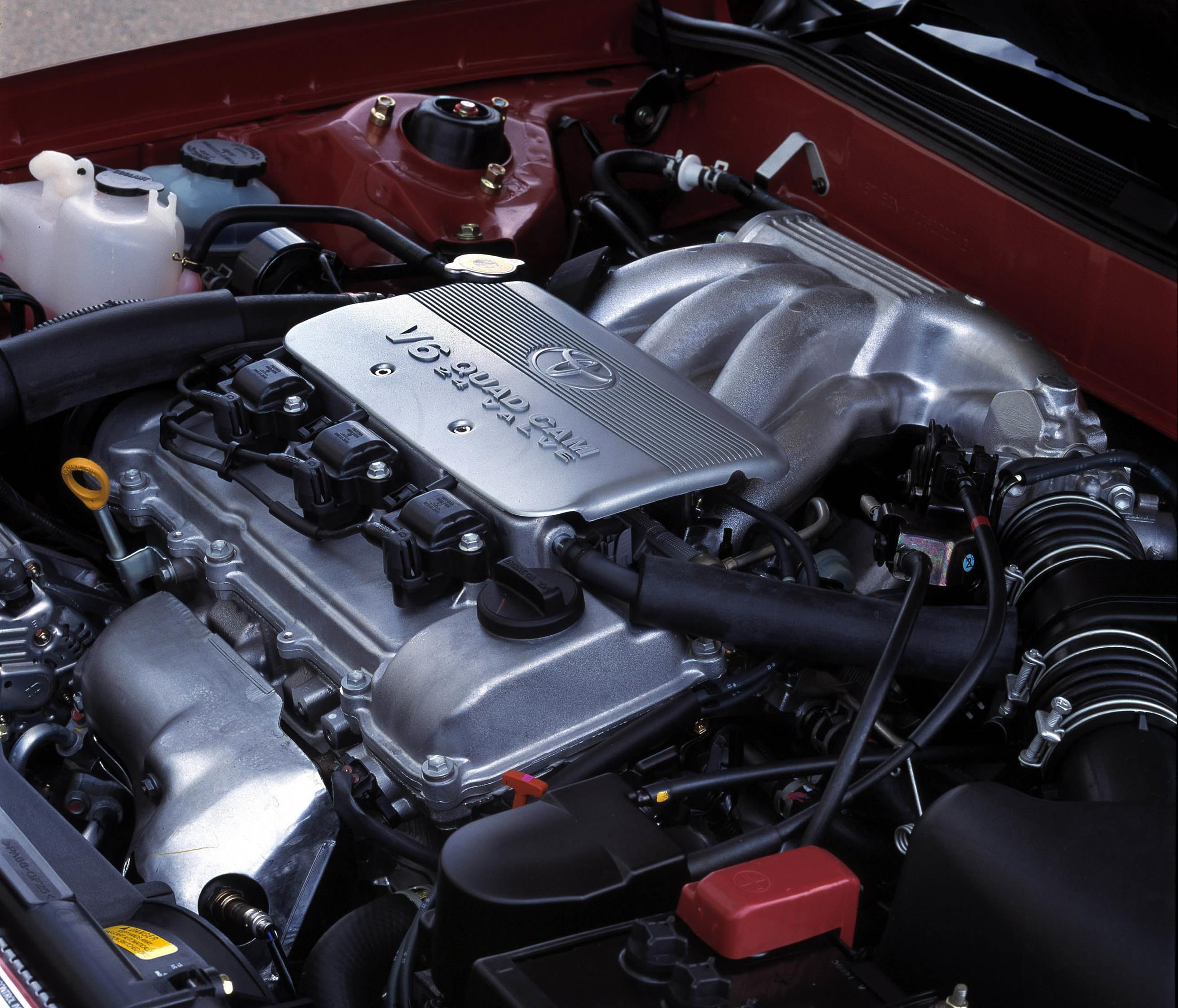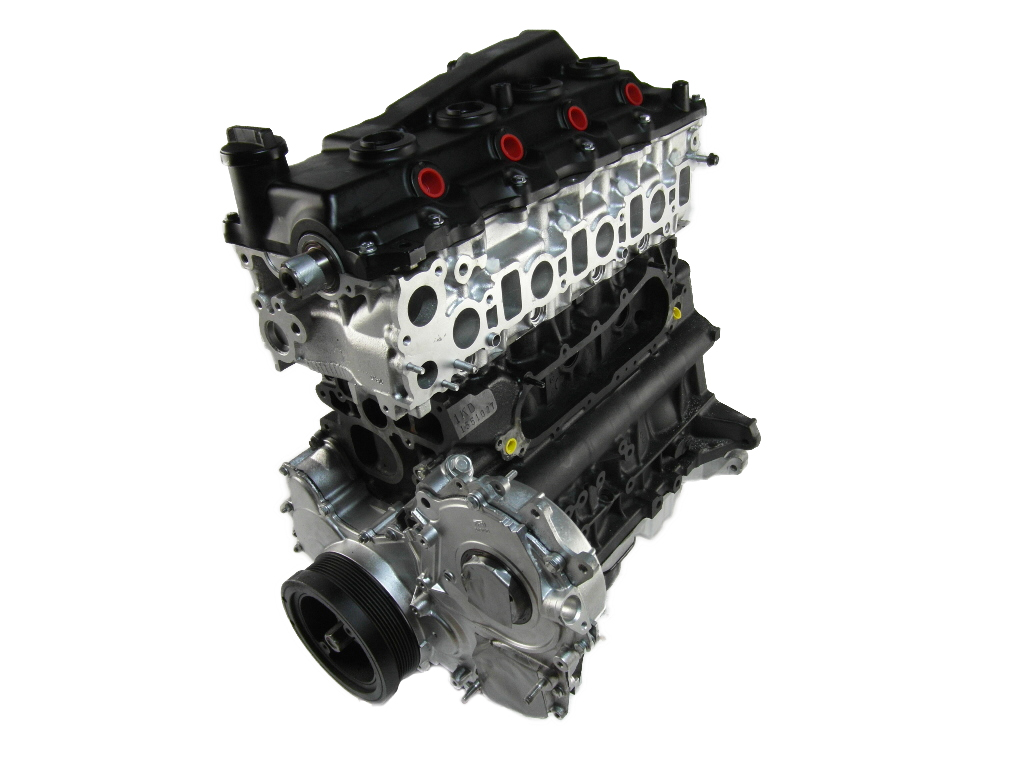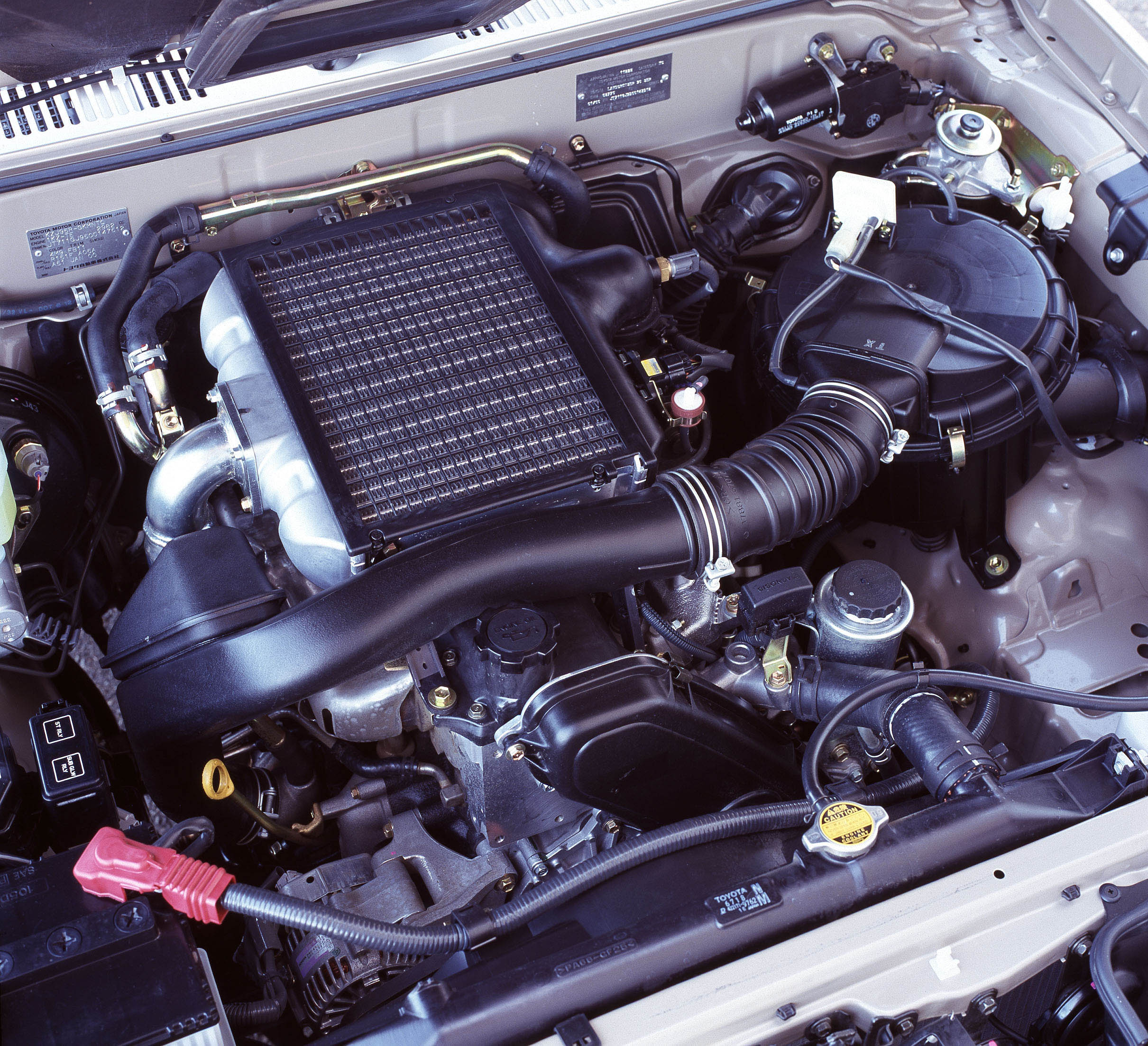Introduction
Audi’s AZB and AGB engines were 2.7-litre biturbo V6 petrol engines that powered the Audi B5 S4 Avant. Key features of the AZB/AGB engine included its:
- Cast iron block with 90-degree ‘V’ angle;
- Die-forged steel crankshaft;
- Forged pistons;
- Cast aluminium alloy cylinder head;
- Double overhead camshafts;
- Five valves per cylinder actuated by hydraulic tappets;
- Variable intake camshaft timing over a range of 22 degrees relative to the crankshaft;
- Parallel BorgWarner K03 turbochargers;
- Compression ratio of 9.3:1; and,
- Maximum engine speed of 6800 rpm.
The AZB/AGB engine had a service weight of approximately 200 kg and was compliant with Euro III emissions standards.
| Model | Engine | Trans. | Peak power | Peak torque |
|---|---|---|---|---|
| Audi B5 S4 | 2.7-litre AZB/AGB biturbo petrol V6 | 6sp man. | 195kW at 5800rpm | 400Nm at 1850-3600rpm |
Block
The AZB/AGB engine had a grey cast iron block with 81.0 mm bores and an 86.4 mm stroke for a capacity of 2671 cc.
Crankshaft and pistons
The AZB/AGB engine had a die-forged steel crankshaft that operated on four main bearings; the bearing caps were attached to the central crankcase by four bolts. The middle two crankshaft bearing caps were also bolted to the side of the crankcase. To withstand high combustion temperatures, the AZB/AGB engine had forged pistons.
Cylinder head
The AZB/AGB engine had a cast aluminium alloy head with double overhead camshafts that were driven by a toothed belt and simplex chain. The intake camshaft provided variable intake valve timing and had an adjustment range of 22 degrees relative to the crankshaft. The intake camshaft was varied according to engine load and speed to increase torque by 10 per cent at the bottom and top ends of the engine speed range.
The AZB/AGB engine had five valves per cylinder: three intake valves and two exhaust valves. For heat dissipation, the exhaust valve stems were filled with sodium. While the AZB/AGB engine did not have a variable intake manifold or tumble flaps, the shape of the inlet duct was designed to create a tumbling motion in the intake air.
BorgWarner K03 turbochargers
The AZB/AGB engine had two water-cooled, parallel BorgWarner K03 turbochargers (one per cylinder bank) and two side-mounted intercoolers. According to Audi, a biturbo strategy was adopted because:
- The smaller turbochargers had faster response; and,
- Higher charge pressure could be achieved at low engine speeds.
The turbochargers were flanged directly onto the exhaust manifold to minimise the distance that the exhaust gases had to travel and reduce temperature losses. Furthermore, the catalytic converters were able to reach operating temperature more quickly. According to Audi, positioning the turbochargers outside of the engine’s ‘V’ also avoided additional heating of the charged air and thermal stress on the sub-assemblies.
Fresh air was induced by the combined air filter and air mass meter and then distributed to the two exhaust gas turbochargers by the air distributor. Once compressed by the turbochargers, the air was fed to the charge air coolers (intercoolers).
The charge air coolers received cooling air from air intakes in the bumper and air vents in the wheel housing liners. The charge air coolers increased the density of the intake air for greater efficiency and the lower temperature also suppressed knocking. The compressed air streams then converged upstream of the throttle valve control part and were distributed to the individual cylinders in the intake manifold.
Charge pressure control
The air mass required to develop a specific level of torque was determined by an air mass calculation and produced by controlling the charge pressure as required. The Bosch Motronic ME 7.1 engine management system regulated charge pressure of both turbochargers via the solenoid valve for charge pressure control. The purpose of charge pressure control was to prevent an excessively high charge pressure from accumulating in the intake system.
To avoid pumping the turbochargers when a sudden transition was made from high load to over-run, two divert air valves were used. The Bosch Motronic ME 7.1 engine management system could activate the divert air valves via an electrical changeover valve.
Cooling
Both the turbochargers were water-cooled and integrated in the cooling circuit which used an electric pump. When the coolant thermostat was closed, coolant flowed back to the coolant pump along the short-circuit line and the heat exchanger. When the coolant thermostat was open, however, coolant flowed back to the thermostat through the radiator (primary flow) or through the oil cooler and expansion tank (secondary flow).
Injection and ignition
The AZB/AGB engine had electronically controlled, multi-point sequential fuel injection via Siemens fuel injectors. The injection and ignition process was controlled by the Bosch Motronic ME 7.1 system. Furthermore, the AZB/AGB engine had a compression ratio of 9.3:1 and 1-4-3-6-2-5 firing order.
Crankcase breather
The AZB/AGB engine had a crankcase breather which consisted of a distributor piece, a pressure limiting valve, a non-return valve and the associated hoses. Specifically,
- The oil vapours and ‘blow-by’ gases from the cylinder heads and the crankcase converged in the distributor piece; and,
- The pressure limiting valve and the non-return valve controlled the return of these vapours and gases to the engine, depending on intake manifold pressure










